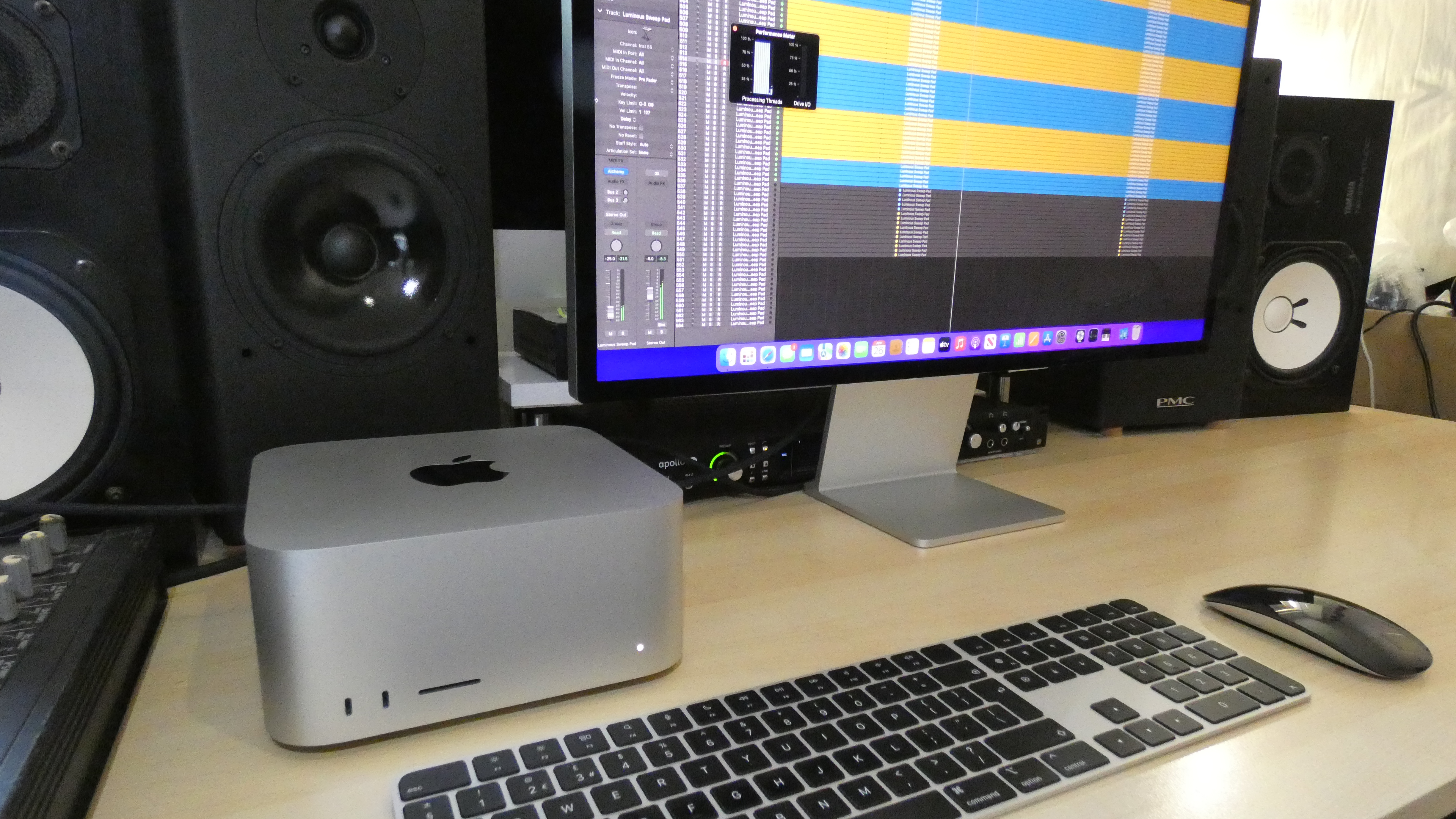MusicRadar Verdict
The Mac Studio delivers incredible performance and is wonderfully compact. That said, it’s by no means cheap, and the lack of upgradeability could be frustrating.
Pros
- +
Impressive CPU and GPU capabilities
- +
Compact
- +
Plenty of connectivity
- +
Quiet
Cons
- -
Expensive
- -
Not upgradeable
- -
Mouse and keyboard not included
MusicRadar's got your back
Apple Mac Studio: What is it?
Apple’s Mac mini and iMac provide decent entry points for creative individuals on a budget, and the much-lauded Apple Silicon M1 processor provides enough power to keep many users happy.
But what if you need a bit more oomph? As it stands you could go for a high-spec MacBook Pro, the highly expandable but very pricey Mac Pro or Apple’s new PC for music production, the Mac Studio.
Based around the company’s latest M1 Max 10-core and M1 Ultra 20-core processors, the Mac Studio effectively has four main variants determined by the CPU and GPU configuration. These are then finessed by your SSD storage and memory choices.
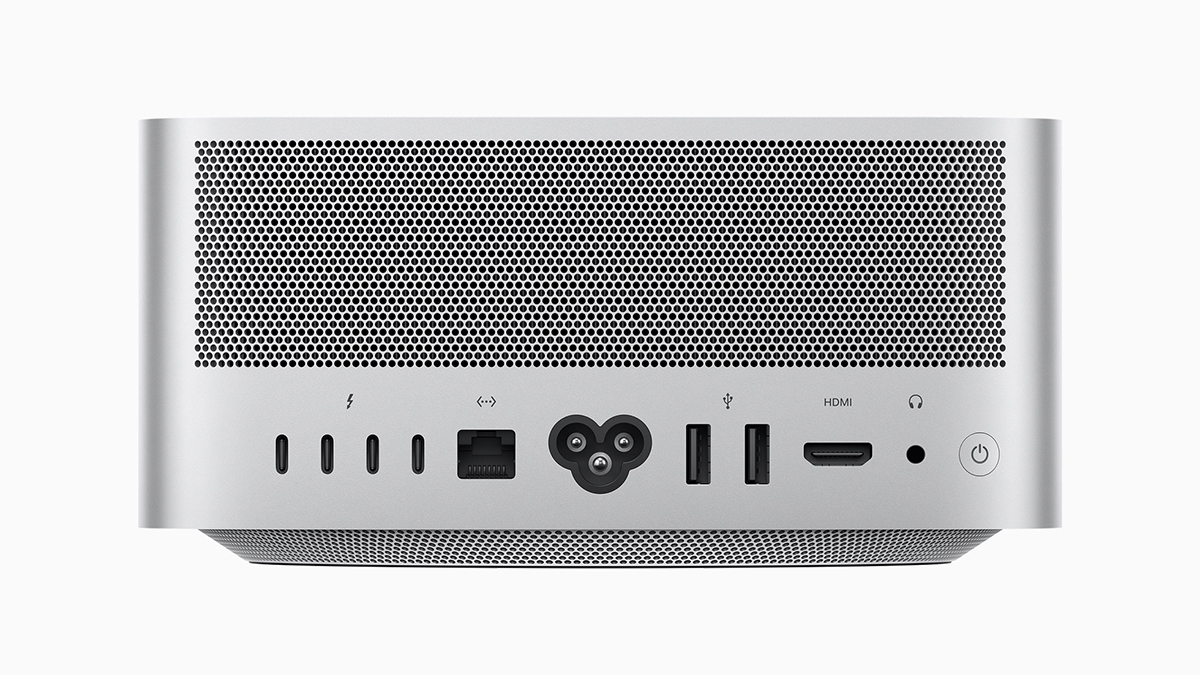
The base machine is the M1 Max with 32GB memory and 512GB storage and costs $1,999/£1,999. The highest spec M1 Ultra machine with 64-core GPU, 128GB memory and 8TB storage costs a whopping $7,999/£7,999.
Our review machine has the M1 Max CPU but with the better 32-core GPU, 16-core neural engine, 64GB RAM and 2TB SSD, and retails for a not inconsiderable $3,199/£3,199.
The Mac Studio ships with no keyboard or mouse. Apple’s latest range of input devices (full size Magic Keyboard with Touch ID, Magic Mouse and Magic Trackpad) are available in white or black, with the latter being slightly more expensive. Either way, if you need a mouse and keyboard you’ll have to budget accordingly.
Finally, the M1 is a ‘system on chip’ design, so the CPU, graphics and memory aspects cannot be changed or upgraded. Whether you can upgrade or replace the SSD remains to be seen, but initial teardown attempts indicate the SSD is accessible and removable, so fingers crossed.
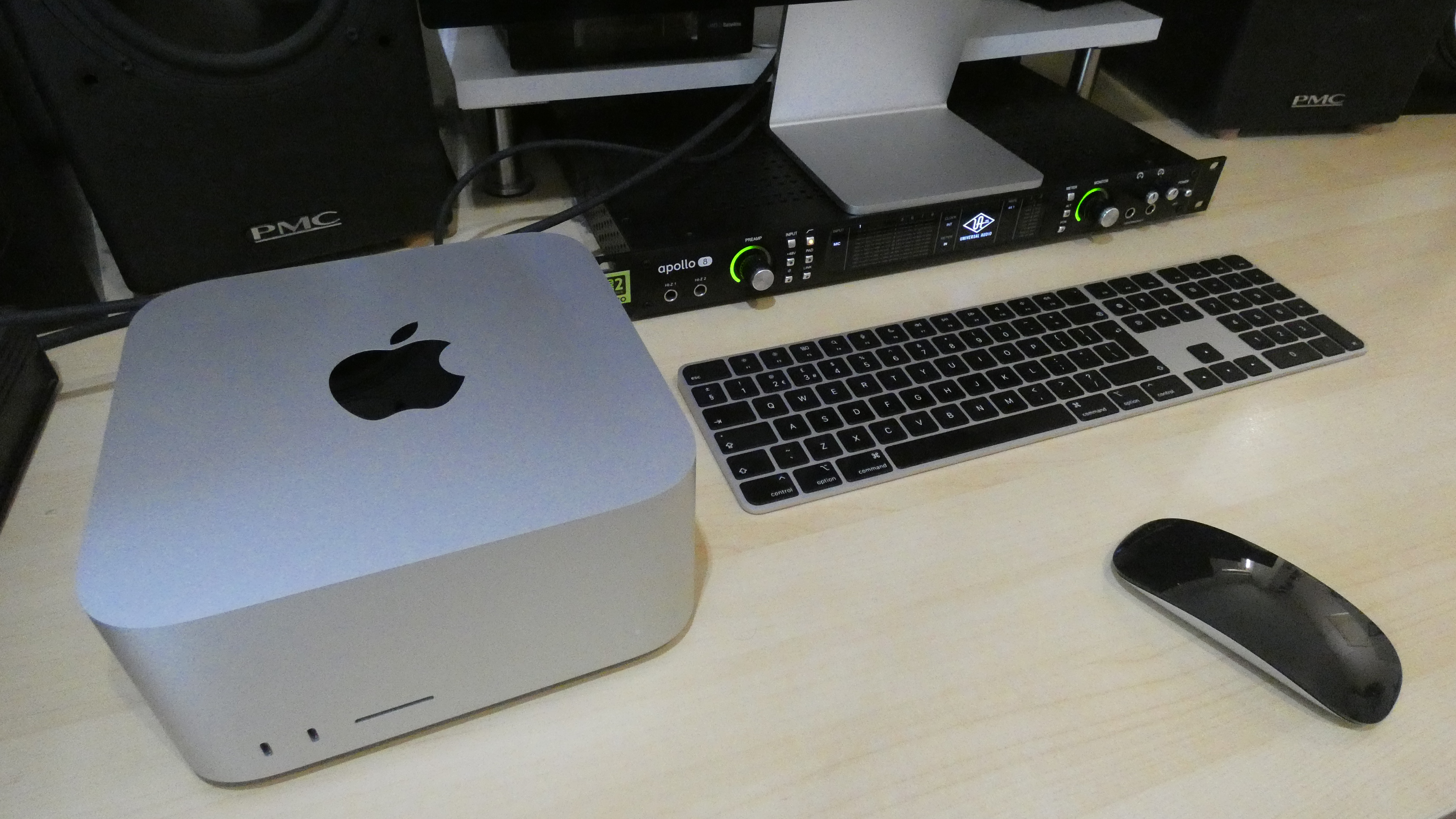
Apple Mac Studio: Performance & verdict
In typical Apple fashion, the Mac Studio is exquisitely packaged, and once freed from its spring-loaded box, the extruded aluminium case looks and feels awesome.
At just under 20cm square it has the same footprint as a Mac Mini, but at just under 10cm is much higher.
Nevertheless, that’s impressively compact. Its circular base plate raises it slightly from the desktop, and if you flip it over you’ll see air venting on the underside to complement the rear vents.
Connectivity is split between the front and back sides, with two USB-C (these are Thunderbolt 4 on the Ultra) and one SDXC slot on the front. The back includes four Thunderbolt 4 ports, Ethernet (10Gb), two USB-A ports, one HDMI, headphone mini-jack and power input.
The power switch is also on the back, with a small LED power indicator on the front, and there’s an internal speaker but no internal mic. It’s all very neat and tidy and we can’t fault the impressive number of ports.
Based on the teardowns, it’s clear that a large portion of the internal space is used for the heatsink and twin fans. Thankfully, although audible, much like in an iMac these are pretty quiet, even with the unit sitting beside you on the table top.
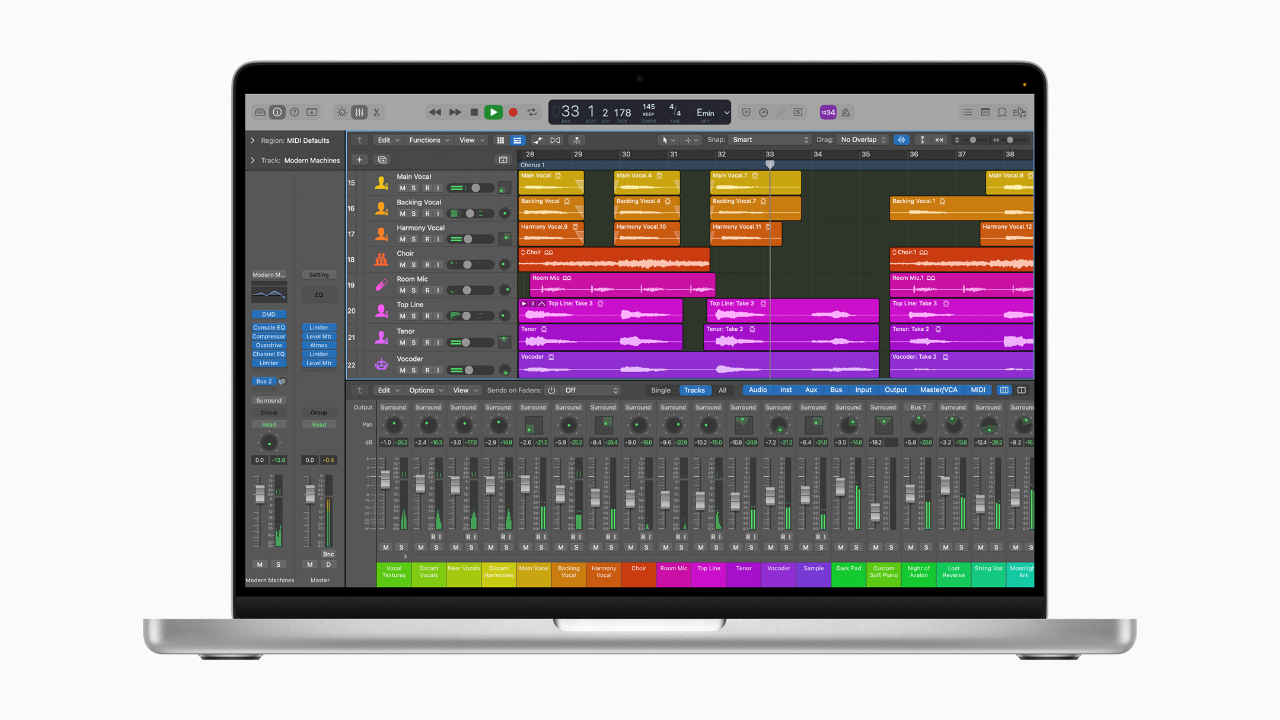
Apple MacBook Pro 14-inch and 16-inch
Apple Mac mini
Apple iMac
With 18 months on the clock, Apple Silicon is now widely supported by third-party DAW and plugin developers. Nevertheless, for our tests we used Apple’s own Logic Pro, with stock plugins and the onboard audio.
DAW performance tends to be hindered most by CPU-intensive plugins such as reverbs and software synthesisers. We tried two tests for the Mac Studio. One using Logic Pro’s ChromaVerb inserted on multiple audio tracks, and a second using the CPU-intensive Alchemy synth playing a 5 note chord.
In the audio preferences we switched processing threads from automatic (8 cores) to 10 cores and throughout the tests tried various audio buffer sizes.
The Mac Studio consistently managed an impressive 418 tracks with the ChromaVerb. With the reverbs bypassed the CPU meter was under 20%.
In the Alchemy test Logic Pro consistently played 85 tracks. We found the buffer size sweet spot was 128 samples, with the higher settings (512 and 1024) the least efficient.
Rather surprisingly the fans did not budge at all during these stress tests, and the casing stayed cool to touch. We also ran Geekbench for our review device, and the scores (1784 single core, 12539 multi core) place it easily amongst the current Mac Pro configurations.
For some time creatives have hankered after a compact screen-free Mac that’s powerful without being ludicrously expensive. The Mac Studio delivers that and even trumps many of the Mac Pro processor configurations.
So, as long as you’re happy with the lack of upgradeability and can stomach the price, we think it’s a pretty compelling proposition.
- Our pick of the best Macs for music production
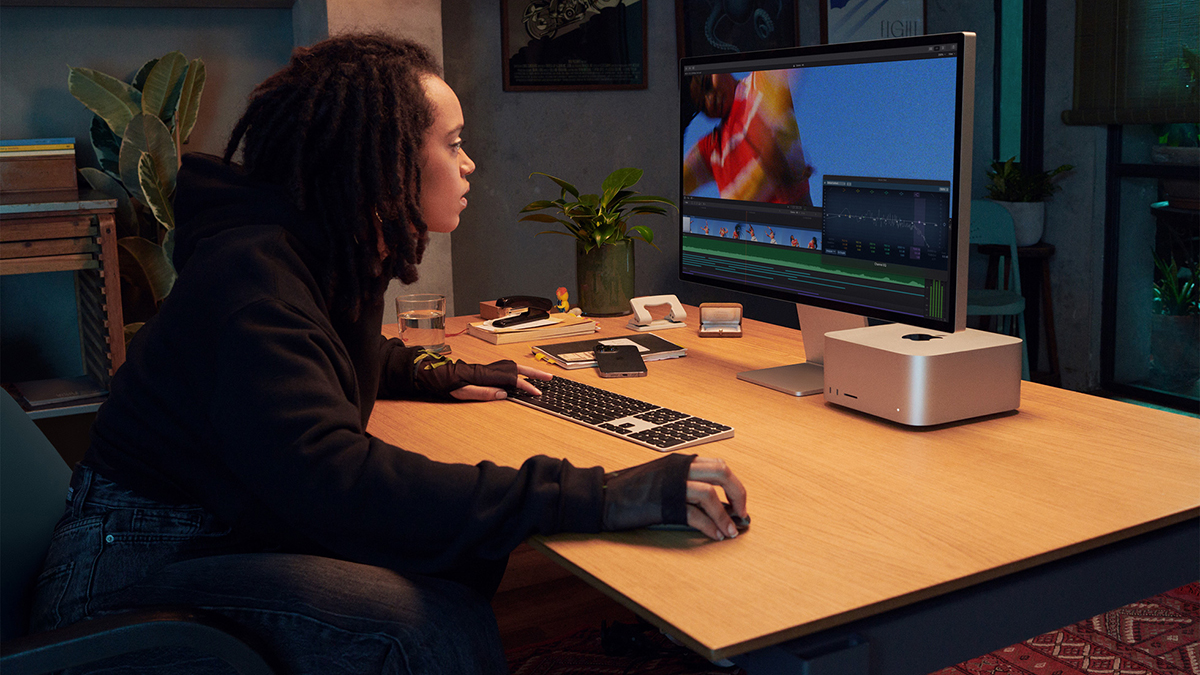
Apple Mac Studio: Hands-on reviews
Mary Spender
Marques Brownlee
Apple Mac Studio: Specifications
- Mac Studio with Apple M1 Max chip
- 10-core CPU with 8 performance cores and 2 efficiency cores
- 24-core GPU configurable to 32-core GPU
- 16-core Neural Engine
- 400GB/s memory bandwidth
- 32GB unified memory configurable to 64GB
- 512GB SSD configurable to 1TB, 2TB, 4TB or 8TB
- Four Thunderbolt 4 ports (supports DisplayPort, USB 4, USB 3.1), Two USB‑A, HDMI port, Two USB‑C, SDXC card slot
- Simultaneously supports up to five displays, up to four 6K / 60Hz over USB‑C and one 4K / 60Hz over HDMI
- Built-in speaker, 3.5mm headphone jack, multi-channel audio output via HDMI port
- Wi‑Fi (IEEE 802.11a/b/g/n/ac compatible, Bluetooth 5.0, 10Gb Ethernet
- Weight: 2.7 kg
- Size: 9.5 (h) x 19.7 (w) x 19.7 (d) cm
- Contact: Apple
Jon is a London based platinum award winning mixer, producer, composer and club remixer with a diverse CV that spans dance, pop, rock and music for media. He’s also a long term contributor to MusicRadar's music technology tutorials and reviews. Whether working alone or collaborating he usually handles final mixdowns, so you’ll also find MusicRadar peppered with his handy mixing tips.
With its latest free update, Ableton has finally turned Note into the app I always wanted it to be
Technically capable, but struggle to make your tunes sound musical? 5 simple music theory hacks to make your tracks stand out
"Despite its size, it delivers impressive audio quality and premium functions as well as featuring a good selection of inspired sounds": Roland GO:Piano 88PX review
